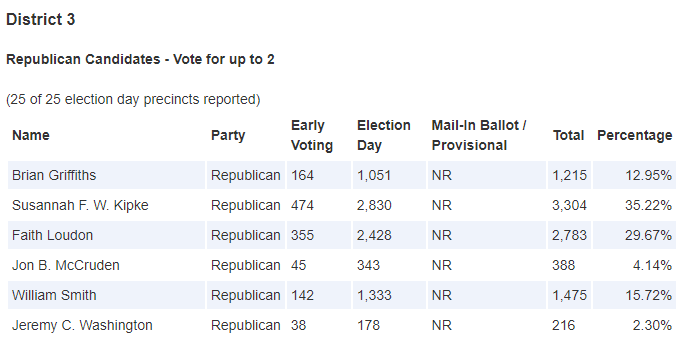I’ve had discussions for a few years now about campaigning in the modern age. I talked or people in the business and people in media (maybe even on a podcast?) about running a totally digital campaign on a small scale. Like running for Central Committee.
When I decided to run for Central Committee, I decided to implement that sort of plan.
I was running in a top-two race with six candidates on the ballot. It wasn’t six when I filed on the day of the filing deadline: half of us filed on deadline day. All of us filed Affidavits of Limited Campaign Expenditures (ALCEs) to limit our money raised and our money spent to $1,000.
I don’t think everybody stuck to theirs.
My plan was to spend $999 and no more. Limited to the following breakdown:
Two text messages to 3x4 and 4x4 Republican voters; one sent the day before Early Voting opened and one the evening before the Primary;
Yard Signs; enough for one at each polling place, with stakes for mounting purchased separately;
Two banners for sign-waving;
Two car magnets;
The rest plowed into Facebook advertising.
What did all of that get me so far? Fourth place;
Let’s compare what I did to what the other candidates did:
Susannah Kipke finished in first place. This will surprise nobody. Her last name was all over the district thanks to Nic Kipke’s run for re-election. I was so confident that she was going to win, I congratulated her on Easter.
Faith Loudon finished second. This is a much more interesting case. Loudon, from what I could tell, did nothing until she sent out a text message after early voting started. She ultimately sent out a mailer as well with endorsements from the Republican establishment. Campaign signs went up the week before, some of them larger-sized signs. Loudon also had multiple signs at almost every polling place, two robocall featuring Nathan Volke and Nicolee Ambrose, plus worked a few polls. No shame in that, she earned the win here.
Will Smith decided to run at the urging of Nic Kipke. As far as I can tell, Smith only deployed yard signs, some of them 4x8 signs, across the district. He did have some folks holding signs in t-shirts with literature at some polling places. Probably explains why he finished almost three percentage points ahead of me. That and the (in)famous name.
Jon McCruden and Jeremy Washington were practically non-entities campaign-wise. McCruden had a few signs along the side of the road in a few places. Neither he nor Washington had signs at polling places. Only thing I ever heard from them was their appearance, along with Loudon, on the Victory for Maryland materials, all of which were legally questionable with their lack of authority line or campaign finance entity.
So what did we learn about running a campaign digitally? Well, if you’re running a small-dollar campaign it’s probably not necessarily going to work running at the County Council level. Maybe if I had spent $2,000, $3,000, $5,000 it would have been workable. But I also think that at this, the most basic level of politics, all-digital doesn’t work either.
Look at James Tarantin. He ran 190(!) Facebook ads during this cycle, spending over $11,800 on them. He raised $183,825.86 through June 30th, most of which was a $100,000 loan. Yet beyond Facebook and Instagram advertising, goofy campaign videos, and emails, I have no idea what his campaign did in an effort to win this campaign. No yard signs. No get-out-the-vote effort. No text messages. No anything.
That explains why Tarantin finished fifth, well behind primary winner Chris Chaffee. As far as I can tell, Chaffee didn’t even do anything.
So can you win an all-digital race in the year 2022? No.





